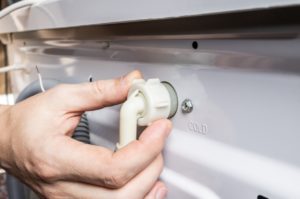
The question that comes to mind is, is it required to have a different pressure washer for each job? Of course, it would diminish the idea of economical cleaning in an easy way. There are many ways by which you can control the pressure on the pressure washer, and in this article, we are going to discuss that.
Ways To Adjust Pressure In A Pressure Washer
There is no adjustment option on the pressure washer because of the maintenance issues. Adjustable pressure controls on the pressure washer require focusing on some vital parts. It is not rocket science to understand that the parts that move more get degraded more easily. Due to high pressure, moving parts on the pressure washer can get damaged way quicker than on the standard faucets.
That does not mean that you can not control the pressure washer’s pressure and risk damaging your car if you have to wash it with a high-power gas pressure washer. These are the ways by which you can control the pressure on the pressure washer.
Nozzle And Tip
The most common way of adjusting the pressure on the pressure washer is by the use of a nozzle and tips. There are many nozzles available with the pressure washer with multiple angles. There are nozzles of 40 degrees, 25 degrees, and 15 degrees and narrow-angle nozzles. The angle of the nozzle is inversely proportional to the pressure, and the low angle nozzles are used to provide a high pressured stream that can also lift heavy stains and paints.
The nozzles are the primary way of adjusting the pressure on the pressure washer. The nozzle increases the pressure and also decreases it. Still, using the narrow-angle nozzle with the low power pressure washer is not recommended to clean the driveways and patios. Similarly, using the wide-angle nozzle on the high power pressure washer to constantly clean the delicate surfaces is also not recommended. Nozzles and tips are best suited in the areas where a pressured stream is required in the concentrated area to lift heavy stains such as mud or gum.
Unloading Valve
Some pressure washers actually offer the variable pressure option on the pressure washer. Some gas-powered pressure washers provide the advantage of an unloading valve on the pump of the pressure by which you can adjust the pressure. Although many pressure washers do not have this option in them, it is still a dependable option when it comes to modifying the pressure in the pressure washer.
Distance
This is the best way by which you can adjust the pressure, and there is no particular expertise required to adjust the pressure by this method. Not all pressure washers come with the unloading valve, and it is very difficult to change the pressure using the nozzle every time there is little change required in the pressure washer.
Using the distance of the tip of the pressure washer from the surface is an excellent way of adjusting the pressure because, by this, you can easily change the pressure according to your preferences. This is the recommended technique, and you should start the pressure washer at a distance and close the distance when you think the desired cleaning effect is achieved.
Final Thoughts
Most of the pressure washers are not available with the unloading valve, but you can still adjust the pressure to your desired cleaning effects. An unloading valve is a built-in feature of the pressure washer, but it is not recommended to change the pressure with it frequently as using it too might have adverse effects on the pump assembly due to backpressure. The best method of adjusting the pressure on the pressure washer is by controlling the distance between the tip of the pressure washer and the surface. You can instantly change the pressure according to the desired levels.
- 10 Best Budget Pressure Washer 2023 – Reviews & Buyer’s Guide - December 7, 2022
- 10 Best Pressure Washer for Cars Wash Reviews [2023] - December 6, 2022
- 10 Best Commercial Pressure Washer 2023 –Buyer’s Guide - December 5, 2022
